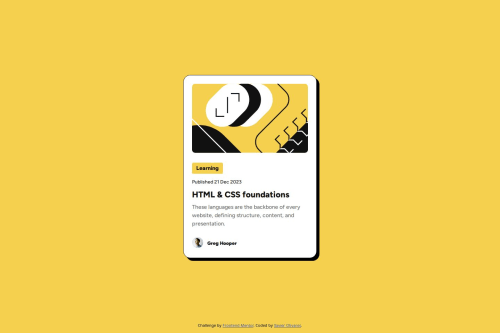
Solution retrospective
What are you most proud of, and what would you do differently next time?
I played around to make the site as responsive as possible. Added some media queries to handle landscape modes on mobile.
What challenges did you encounter, and how did you overcome them?It was my first time using figma, understanding where to find the dimensions and styling was a good challenge.
What specific areas of your project would you like help with?General feedback! Happy to learn and see how others did :)
Code
Loading...
Please log in to post a comment
Log in with GitHubCommunity feedback
No feedback yet. Be the first to give feedback on Xavier O.'s solution.
Join our Discord community
Join thousands of Frontend Mentor community members taking the challenges, sharing resources, helping each other, and chatting about all things front-end!
Join our Discord